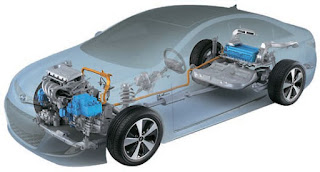Demystifying Hybrid Systems: Full, Mild, and Plug-In Hybrids Explained
Subheading 1: The Hybrid Revolution
In an era where environmental concerns and fuel efficiency take center stage, hybrid cars have gained substantial popularity. These innovative vehicles combine traditional gasoline engines with electric power to deliver impressive performance and eco-friendly driving experiences. To truly understand hybrid cars, it's essential to grasp the different types of hybrid systems available today.
Subheading 2: Full Hybrids - Power and Efficiency in Harmony
Full Hybrid Systems Explained
Full hybrids, often known as strong hybrids, represent the pinnacle of hybrid technology. These vehicles are equipped with both an internal combustion engine (ICE) and a robust electric motor. They seamlessly switch between these power sources, optimizing fuel efficiency and performance.
How Full Hybrids Work
Full hybrids can operate on electric power alone at low speeds, making them ideal for city driving. When you demand more power, the gasoline engine kicks in, providing the extra boost needed for highway speeds and rapid acceleration. The electric motor also serves as a generator, capturing energy during braking and deceleration to recharge the battery.
Examples of Full Hybrids
Toyota Prius
Honda Insight
Ford Fusion Hybrid
Subheading 3: Mild Hybrids - A Boost for Efficiency
Mild Hybrid Systems Explained
Mild hybrids, as the name suggests, offer a more modest electric assist compared to full hybrids. They feature a smaller electric motor that primarily supports the gasoline engine rather than driving the vehicle on its own.
How Mild Hybrids Work
In mild hybrids, the electric motor aids the gasoline engine during acceleration and provides energy-saving features like start-stop systems. While they can't run solely on electric power, they enhance fuel efficiency and reduce emissions.
Examples of Mild Hybrids
Honda CR-V Hybrid
Kia Sorento Hybrid
Audi Q5 45 TFSI e
Subheading 4: Plug-In Hybrids - The Best of Both Worlds
Plug-In Hybrid Systems Explained
Plug-in hybrids (PHEVs) are a bridge between conventional hybrids and fully electric vehicles. They come with a larger battery that can be charged from an external source, allowing for extended electric-only driving.
How Plug-In Hybrids Work
PHEVs can operate on electricity alone for a significant distance, making them perfect for short commutes. When the battery depletes, they seamlessly switch to the gasoline engine or a combination of both. Plug-in hybrids offer versatility, allowing drivers to choose between electric and hybrid modes.
Examples of Plug-In Hybrids
Chevrolet Volt
Mitsubishi Outlander PHEV
BMW X5 xDrive45e
Subheading 5: Making the Right Choice
Now that you understand the differences between full, mild, and plug-in hybrid systems, choosing the right one depends on your driving habits, environmental concerns, and budget. Each type offers unique advantages, so consider your needs when selecting the hybrid that best suits your lifestyle.
Subheading 3: Conclusion
In a world where sustainability and fuel efficiency matter more than ever, hybrid cars continue to evolve and pave the way for a greener future. Understanding the nuances of full, mild, and plug-in hybrid systems empowers you to make an informed decision and embrace a more eco-conscious way of driving.

Comments
Post a Comment